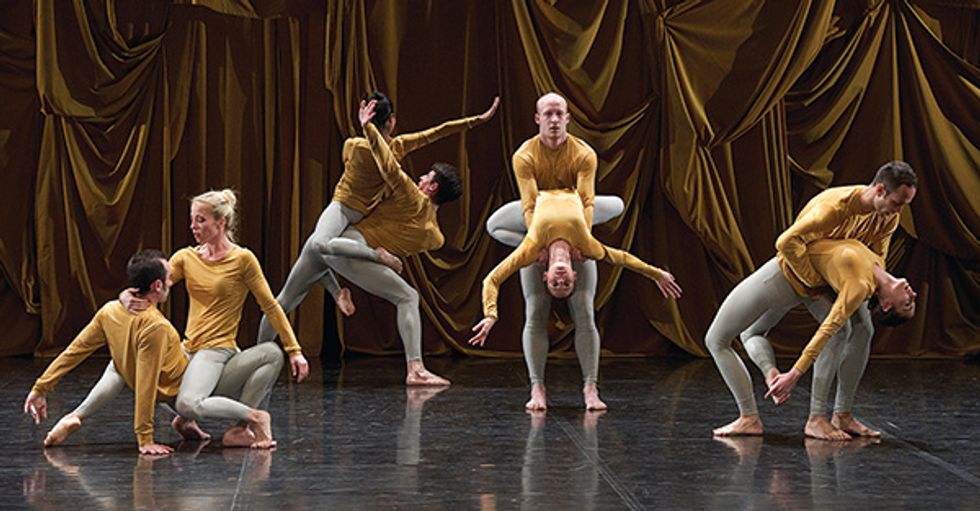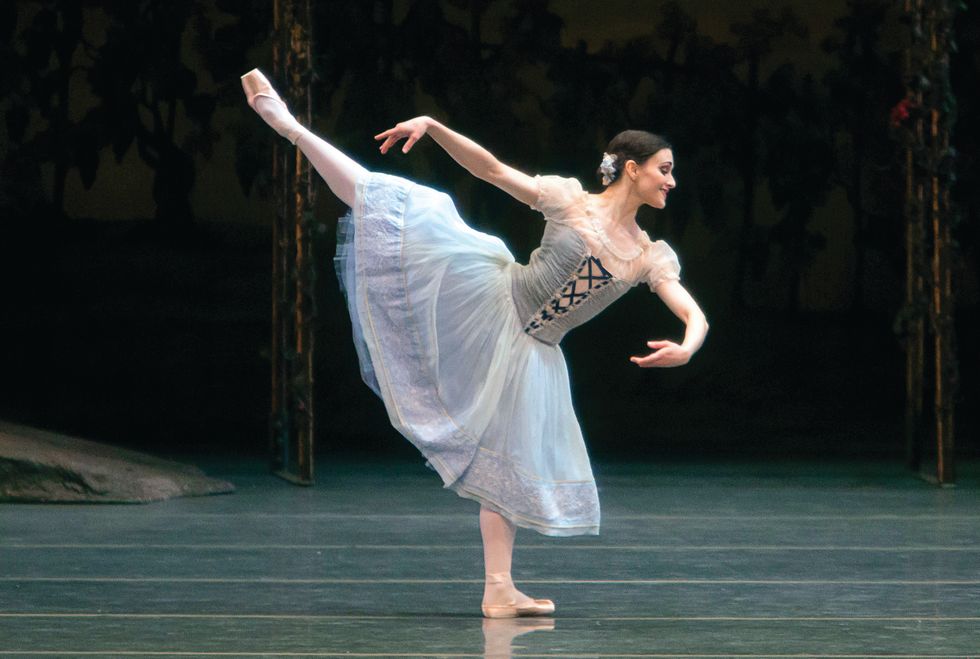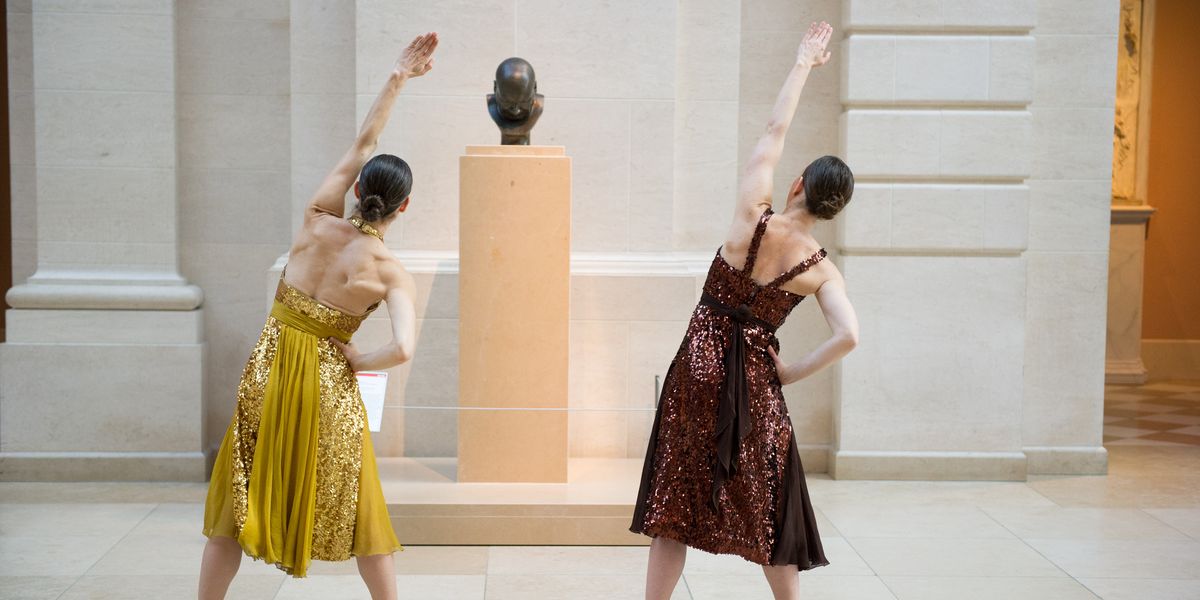Dance Magazine Contributors Spill on Their Favorite Dance Moments of 2017
Dance Magazine
editors and writers chose their favorite dance happenings of the year:
Liveliest Revival: Merce Cunningham’s Sounddance

Ballet de Lorraine in Sounddance. PC Laurent Philippe, Courtesy Richard Kornberg & Associates
When Ballet de Lorraine came to The Joyce Theater in February, the dancers looked transformed—electrified—by the final work on the program. The piece was Merce Cunningham’s Sounddance, a tour-de-force from 1975 in which the dancers ricochet about the stage without stopping for 17 minutes. The audience held its breath until it was over. Then in June the Merce Cunningham Trust staged Sounddance in New York City with young dancers from Juilliard, Purchase, Ailey and other programs. The results received a whooping ovation. Almost a decade since Cunningham’s death, the work’s propulsive power is undimmed. —Marina Harss, writer
Most Versatile Soloist: Aakash Odedra

Aakash Odedra. PC Christopher Duggan, Courtesy Jacob’s Pillow
Aakash Odedra slipped into the Doris Duke Theater at Jacob’s Pillow this summer with a solo debut show called Rising, an apt way to describe his career momentum. Odedra is both a virtuosic kathak dancer and a smart curator, as he assembled works by global iconoclasts Sidi Larbi Cherkaoui, Akram Khan and Russell Maliphant, revealing a protean ability to enter each dancemaker’s world. Odedra opened the show with a stripped down kathak piece, showing off his attention to rhythm, shape and the malleability of tradition. To witness his extremely light and un-muscled approach throughout the evening proved an astonishing experience. —Nancy Wozny, writer
Most Powerful Documentary: Bronx Gothic

Bronx Gothic. Courtesy Grasshopper Film
Bronx Gothic
, directed by Andrew Rossi and based on Okwui Okpokwasili‘s performance of the same name, grants the choreographer and performer’s audience intimate access into her process, including her family life and the struggles and triumphs of being a mother. The film is a reminder that in order to produce meaningful dance, you have to dig deeper than you might anticipate during the initial planning. There is so much power that drives Okpokwasili’s work, and Bronx Gothic lets us see the blood, sweat and tears that go into that. —Kelsey Grills, assistant editor, audience engagement
Most Surprising Performance: Catherine Hurlin in Whipped Cream

Hurlin in Whipped Cream. PC Doug Gifford, Courtesy ABT
In Alexei Ratmansky’s fantastical Whipped Cream, American Ballet Theatre’s Catherine Hurlin was just as bubbly as the champagne she represented. Until this spring’s premiere, the crisp technician was known for her more polite performances, but here she was vivacious, fun, enticing. In a show that’s full of visual spectacle, I kept being drawn back to Hurlin’s antics. Who knew this corps dancer had such comedic flair? —Madeline Schrock, managing editor
Best Non-Dancing on Broadway: Come From Away, Indecent and Natasha, Pierre & the Great Comet of 1812

Indecent. PC Carol Rosegg, Courtesy Connecticut College
The line separating choreography from musical staging became thinner in 2017. Three musicals put non-dancers front and center and made them look like experts. The actual experts were Kelly Devine, David Dorfman and Sam Pinkleton, expanding Broadway choreography with ordinary moves used in extraordinary ways. Their exuberant dances in Come From Away, Indecent and Natasha, Pierre & the Great Comet of 1812 were utterly distinctive and impossible to extricate from their contexts—a Newfoundland town caught up in the aftermath of 9/11, Jewish actors re-enacting history and a boisterous rendition of War and Peace. —Sylviane Gold, On Broadway columnist
Most Relevant Ballet: Justin Peck’s The Times Are Racing

The Times Are Racing. PC Paul Kolnik, Courtesy NYCB
The Times Are Racing
is a sneaker ballet in the Robbins tradition with the choreographic inside jokes typical of Justin Peck’s work. But it’s also wholly contemporary and undeniably reflective of the world we live in now. I loved that the leads were created to be gender neutral, that Peck danced in the original cast and that his duet with Robert Fairchild anchored the ballet. But mostly I loved how recognizable it was as a creative 20-something living in New York City: the anxiety, the friendships, the solidarity, the individuality. —Courtney Escoyne, assistant editor
Zaniest Idea That Totally Worked: Monica Bill Barnes’ The Museum Workout

The Museum Workout. PC Paula Lobo, Courtesy Metropolitan Museum
The Museum Workout
could have just been a fun gimmick. But Monica Bill Barnes & Company’s aerobic journey through the Metropolitan Museum of Art felt not only subversive, but surprisingly poignant. By breaking the rules of expected conduct—doing squats to the Bee Gees while looking at Madame X instead of quietly discussing it with companions—this project made me rethink the whole museum experience, and even wonder what other parts of my life could be improved with some cardio. —Jennifer Stahl, editor in chief
Most Successful Ballet as Theater: Annabelle Lopez Ochoa’s A Streetcar Named Desire

A Streetcar Named Desire. PC Andy Ross, Courtesy Scottish Ballet
The Scottish Ballet’s production of A Streetcar Named Desire made its West Coast premiere in Los Angeles in May, and Tennessee Williams’ classic play came to life with all the poetry and tragedy that ballet demonstrates in peak form. By collaborating with theater director Nancy Heckler, choreographer Annabelle Lopez Ochoa wove a complex portrait of Blanche Dubois, including her vital backstory. It’s an idea for a ballet that could have gone wrong in every way, but instead emerged brilliantly with the luminous Eve Mutso as the ill-fated protagonist. This production, led by women, shed a light on a 20th-century play from a 21st-century feminist perspective. —Joseph Carman, writer
Boldest Site-Specific Performance: Solange’s An Ode To

Solange’s An Ode To. PC Carys Huws, Courtesy Red Bull Content Pool
Recording artist and indie music world icon Solange’s An Ode To in the Guggenheim Museum’s rotunda was nothing short of magical. She demanded that we be fully present the moment we entered the room, having all phones checked at the door and requesting that audience members wear white. Solange’s own choreography—performed by an army of black women and occasionally by her super-groovy band—at some points felt like an homage to Trisha Brown. But at other moments, she completely let loose, twerking on the floor, sprinting through the audience. It was beyond special to see postmodern dance used by a high-profile artist in a way that made it an essential partner to the music and the experience. —Lauren Wingenroth, assistant editor
Most Exciting Debut: Sarah Lane in Giselle

Lane in Giselle. PC Erin Baiano, Courtesy ABT
Sarah Lane seemingly did the impossible by making a 19th-century ballet feel completely fresh and modern—and during her New York City debut as Giselle, no less. She was technically pristine, with jumps that soared and arabesque lines held until the last second. Her acting was equally impressive: From starry-eyed innocence, as she falls in love with Albrecht, to heart-wrenching devastation when she learns of his engagement and later protects him from the wilis, Lane swept the audience into the story along with her. —Marissa DeSantis, assistant editor
Find out what Dance Magazine readers chose as their favorite performances of the year.




